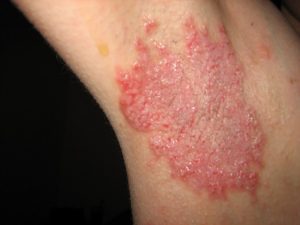LDN great for wound healing and Hailey-Hailey Disease
Low dose naltrexone (LDN) 1.5 mg to 3 mg daily was given to patients with Familial Benign Pemphigus also known as Hailey-Hailey Disease. This disease causes blisters and sores on the skin.
The results? Each patient experienced at least 80% improvement. One patient had improvement in depression. Low-dose naltrexone is thought to affect the opioid or toll-like receptor signaling to improve calcium mobilization, keratinocyte differentiation, and wound healing.
The Research
JAMA Dermatol. 2017 Aug 2. doi: 10.1001/jamadermatol.2017.2445. [Epub ahead of print]
Low-Dose Naltrexone Treatment of Familial Benign Pemphigus (Hailey-Hailey Disease).
Ibrahim O1, Hogan SR1, Vij A1, Fernandez AP2.
Abstract
IMPORTANCE:
Familial benign pemphigus, or Hailey-Hailey disease (HHD), is a rare and debilitating genetic dermatosis characterized by chronic, recurrent vesicles, erosions, and maceration in flexural areas. Despite the reported therapeutic modalities, such as topical and systemic corticosteroids, systemic immunomodulators, topical and systemic retinoids, and laser, HHD can still be markedly difficult to control.
OBJECTIVE:
To assess low-dose naltrexone hydrochloride in the treatment of recalcitrant HHD.
DESIGN, SETTING, AND PARTICIPANTS:
In this case series, 3 patients with biopsy-proven recalcitrant HHD were evaluated in the outpatient dermatology clinic at the Cleveland Clinic. Each patient was treated with low-dose naltrexone hydrochloride at a dosage of 1.5 to 3.0 mg per day. No laboratory monitoring was necessary. Clinical response (healing of erosions, improvement in erythema, and alleviation of pain), adverse effects, and subjective quality of life were monitored throughout the treatment. The study dates were January 2016 to January 2017.
MAIN OUTCOMES AND MEASURES:
Objective clinical response as assessed by the treating dermatologist, subjective quality of life as reported by the patient, and recorded adverse effects were monitored throughout the treatment at intervals of 2 to 3 months.
RESULTS:
The 3 patients included a woman in her 40s and 2 men in their 60s. Each patient exhibited at least an 80% improvement in extent of disease, with one patient demonstrating 90% clearance. All 3 patients had substantial improvement in quality of life, with one patient reporting improvement in his depression. No adverse effects were recorded.
CONCLUSIONS AND RELEVANCE:
Low-dose naltrexone may represent a low-cost and low-risk alternative or adjunct in the treatment of HHD.












